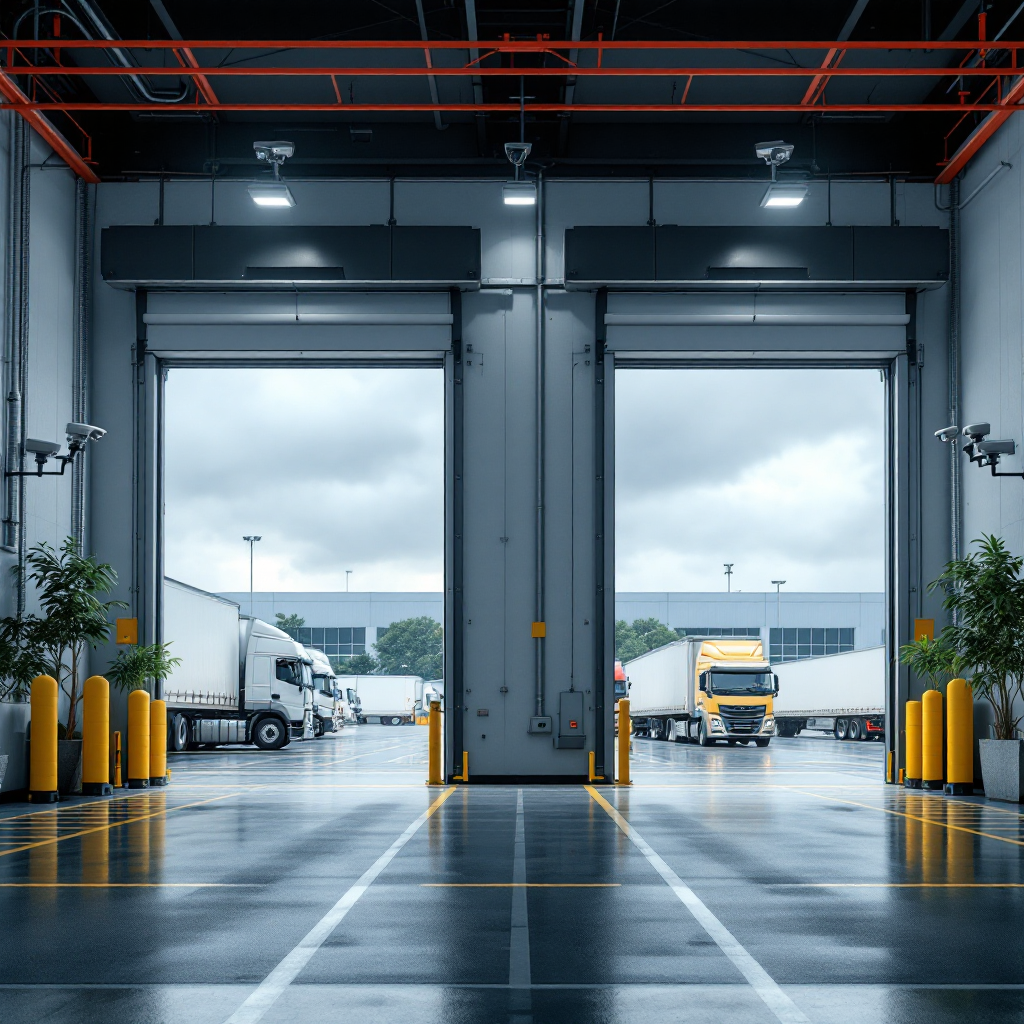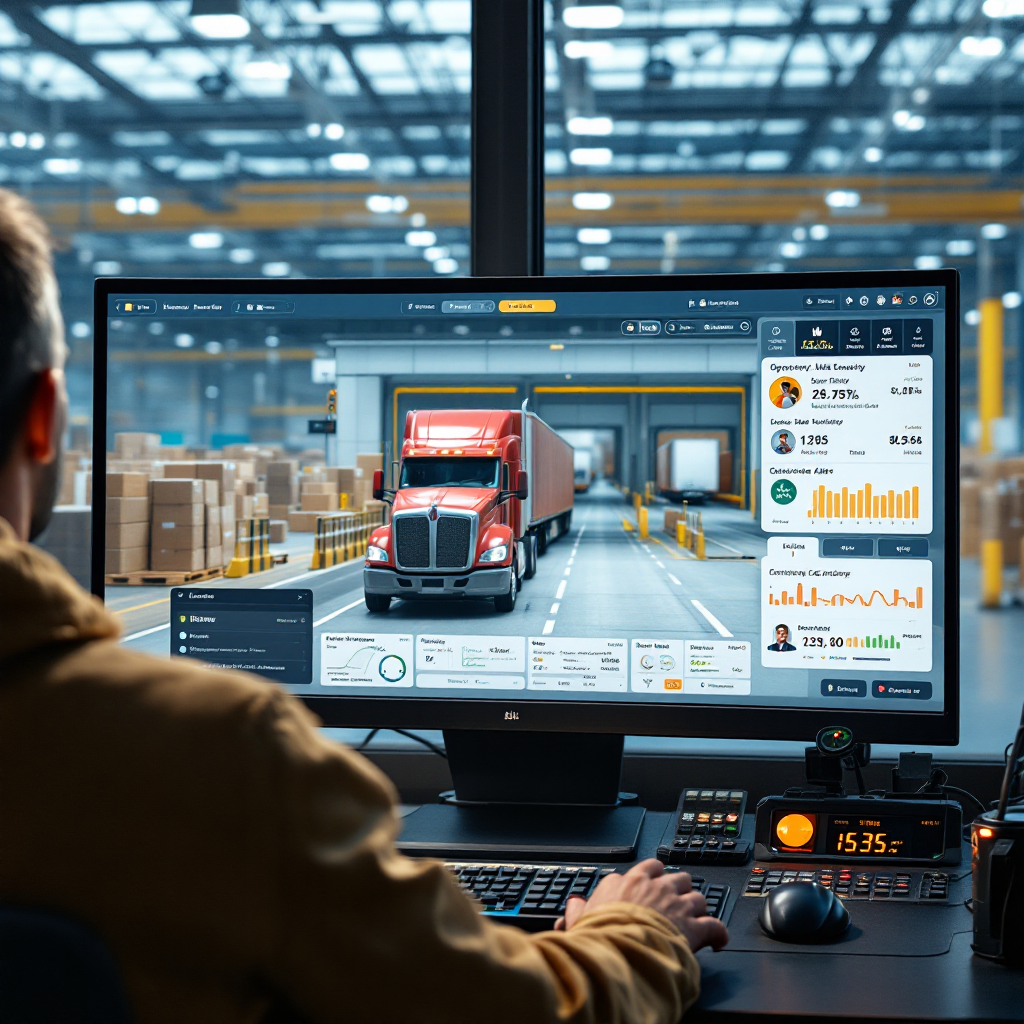Optimize Gate Operations with ai-powered analytics
Gate operations at busy terminals rely on simple metrics: average gate processing times, queue length, and throughput per hour. Also, operators track idle time, entry and exit cycles, and dwell time to monitor productivity. However, staff and yard managers still face bottleneck events that create delay and congestion. In addition, traditional processes often depend on manual logs and the need for manual reconciliation, which slows decision-making and hides problems.
Today, teams use camera networks to provide continuous visibility and to feed data into AI models for faster decisions. Real-time analytics turn video into measurable KPIs that help optimize staffing and reduce wait time for trucks. Research finds that average truck dwell times often run 30 minutes to over an hour, which cuts available driving hours and reduces throughput (study on truck dwell times). Also, camera-based solutions that stream detections to operations dashboards can cut vehicle dwell time by providing real-time alerts and pattern recognition that improve transport efficiency (Optimize Vehicle Dwell Time with AI Detection).
AI-based pattern recognition predicts peak hours and suggests staffing plans. Then, yard managers can open additional lanes or reserve docks and parking spots in real time so flow and improve. For terminals, these analytics have produced throughput gains and shorter gate wait times in field audits, sometimes up to 20–30% (optimized gate operations report). Also, Visionplatform.ai turns existing CCTV into operational sensors so operations staff can stream events to dashboards, remove manual steps, and improve decision speed while keeping data on-premise for GDPR and EU AI Act readiness.
Measure dwell time in real-time with security camera systems
Dwell time measures every minute a truck spends at a location, including waiting, loading, and unloading. Therefore, long dwell time reduces driver productivity and raises operating cost. The American Transportation Research Institute highlights that detention and driver delay erode hours-of-service and hurt productivity (ATRI overview). In addition, long queues and slow gates circulate inefficiency downstream.
Security camera systems deliver continuous video streams that feed AI models for detection and tracking. Also, careful camera placement is essential: mount cameras to cover entry lanes, gates, dock doors and parking bays to track entry or exit and to detect and classify vehicles as they move. Use license plate capture combined with number plate recognition and optical character recognition to link an arrival to a booking. Then, calibration and time sync keep measurements accurate in low light and poor weather.
The data pipeline converts video into structured events at the edge, then streams those events to dashboards and to a yard management system. In practice, edge inference reduces latency so teams can act in real time without moving raw video to the cloud. Visionplatform.ai keeps models on-premise and publishes structured events so data from security stays inside the enterprise and operations teams can act without vendor lock-in. Accuracy benchmarks show camera-based detection often achieves high precision, and systems can validate compliance with hours-of-service rules while sending an alert to security personnel when dwell time exceeds limits (FMCSA findings).

AI vision within minutes?
With our no-code platform you can just focus on your data, we’ll do the rest
Automate queue management to reduce wait time and congestion
Queues form when arrivals cluster, when check-in lags, or when an incoming appointment does not match the available dock. Also, paperwork queues and unpredictable shipper ETAs amplify congestion. To cope, operators automate scheduling so appointments and lanes match demand. AI-driven scheduling and dynamic slot allocation balance demand and available docks; automation ensures smoother flow of vehicles and shorter truck stands. Then, planners can avoid long lines and reduce costly delays.
Systems combine camera feeds with plate recognition and booking data to assign lanes before a truck arrives. When a truck approaches, a gate automation module can open the correct lane, confirm ETA, and reduce wait time through pre-check-in workflows. Next, automated rules detect when a dock will free up and reallocate the next appointment based on demand and priority. This kind of decisioning helps streamline yard operations and cuts queue length and congestion.
Field audits indicate optimized gate operations and camera-based monitoring reduce average gate wait times and boost throughput by up to 20–30% (performance audits). Also, eliminating the need for staff to manage paper checks raises productivity and lowers error. Tools such as isarsoft perception validate that turning camera feeds into sensor events is practical and scalable. For a close example outside freight, see how ticket-hall queue analytics use CCTV to measure and manage passenger lines (queue analytics via CCTV). Consequently, the yard clears faster, drivers face fewer delays, and the gate becomes predictable.
Leverage automated gate systems for efficient yard management
Automated gate systems combine ANPR-capable cameras, vehicle detectors, RFID readers and edge servers to validate entry while keeping video local. Hardware elements include barriers, smart controllers, and networked edge servers. Then, software layers provide access control and gate management dashboards that show live status, alert conditions, and historical trends. Camera feeds provide instant detection that ties directly to the gate management console.
Integration links events to a yard management system so lane sequencing and dock prep occur before a truck enters. Also, access control policies manage authorized entry and keep unauthorized vehicles away. Automation ensures security personnel receive an alert if a vehicle blocks a lane or if a number plate does not match a booking. Case studies from ports and terminals show shorter dwell time and improved traffic flow after automated gate deployment, with measurable decreases in delay and improved utilization (seaport dwell analysis). For work at scale, see quay crane and yard equipment detection examples that integrate cameras into yard workflows (quay crane and yard equipment detection AI).
Efficient gate operations also support health and safety. For example, a gate access control layer can confirm driver PPE, check for unauthorized visitors, and produce auditable logs for compliance monitoring. Finally, a modern yard management system links the gate to WMS and TMS so the flow of vehicles becomes predictable and coordination with warehouses improves.

AI vision within minutes?
With our no-code platform you can just focus on your data, we’ll do the rest
Enhance supply chain logistics through camera-based monitoring
Gate analytics feed directly to TMS and ERP so planners can react to delay and re-sequence pickups. In addition, camera-based monitoring supplies timestamped arrival events and license plate matches that planners use to forecast inventory arrivals and downstream capacity. That information helps operations teams and carriers to plan lanes, resources, and handoffs more accurately.
Linking gate events to transport schedules fills visibility gaps in multimodal flows. Then, planners can optimize vehicle routing and select carriers more effectively. Use artificial intelligence to connect gate analytics to route choice at origin so you reduce empty miles and better match capacity to demand. Dr. David Correll explains that “accurate prediction and analysis of truck dwell time using camera and sensor data is essential for improving logistics efficiency and reducing costly delays in the supply chain” (Predicting Dwell Time). Furthermore, empirical studies show average truck dwell times often range from 30 minutes to over an hour, which creates pressure on available driving hours (empirical analysis).
Operationally, gate insights support cross-dock operations and warehouse planning. For example, planners can reserve labor and staging space when a high number of trucks are due within an hour. Also, the system sends an alert when bottlenecks build, which helps shippers and carriers avoid downstream congestion. Modular deployments work well in warehouse and manufacturing facilities, where gate events inform dock scheduling, reduce late arrivals for docks, and allow better resource allocation. In practice, ai and predictive analytics lift throughput across terminals and give planners a measurable advantage. For cross-industry inspiration, consider AI video analytics used in rail stations to coordinate multimodal movements (AI for train stations).
Integrate ai and gate automation in a unified management system
A practical end-to-end architecture unites cameras at the edge, AI models on GPU servers, and a central management system that streams structured events to TMS and ERP. In real time, this stack turns video into decisions without streaming raw footage off-site. Edge computing reduces latency and keeps sensitive footage local. Also, Visionplatform.ai focuses on on-prem deployment so teams can meet EU AI Act and GDPR obligations while owning data and models.
Data governance is critical. Therefore, define model training, access roles, and audit trails so you can validate outputs and demonstrate compliance. Then, operational dashboards let yard managers and operations staff track measurable KPIs that keep operations predictable. Predictive maintenance extends uptime: AI flags component wear on gates and cameras and schedules repairs before they cause delay.
Consider scale and deployment from the start. Containerized services and GPU clusters let you add streams without disrupting the management system. Also, secure integration with VMS solutions such as Milestone keeps alarms and events synchronized with video evidence (Milestone XProtect integration). Finally, the business case becomes measurable: reduced wait time, fewer detention fees, and higher driver satisfaction deliver ROI. As a result, firms gain a tangible competitive edge when they use AI-powered gate automation to streamline workflows, validate savings, and keep operations under control.
FAQ
How does camera-based monitoring reduce dwell time?
Camera-based monitoring captures arrival, check-in, and load events so you can measure and predict dwell time. Then, AI models use that structured data to recommend actions that reduce queue build-up and speed processing.
What is the role of ANPR or number plate recognition at the gate?
ANPR ties a vehicle to a booking and eliminates manual check-in steps. As a result, lanes can open automatically and gates can confirm appointments without extra staff intervention.
Can on-prem AI meet privacy and compliance requirements?
Yes. On-prem deployment keeps footage and training data inside your environment. Therefore, you can meet GDPR and EU AI Act constraints while retaining control over models and logs.
What measurable benefits should I expect from gate automation?
Typical improvements include reduced average gate wait time, higher throughput, and fewer detention hours. Field audits have shown throughput gains of up to 20–30% in optimized deployments (performance audits).
How do security camera systems integrate with yard management systems?
Cameras stream detections to edge servers that publish events to MQTT or webhooks. Those events then feed a yard management system so lane sequencing and dock prep can occur before the truck enters.
Will AI replace gate staff?
No. AI augments staff by automating repeat tasks and surfacing exceptions. Consequently, staff can focus on complex checks and safety while automation handles routine confirmations.
How accurate are camera-based detections in low light or bad weather?
Modern models with calibrated optics and infrared support maintain high accuracy in many conditions. Still, proper placement and calibration remain essential to achieve reliable detection and avoid false alerts.
What is the deployment path for scaling from pilot to full site?
Start with a focused pilot on key lanes, validate detections, and then expand with containerized edge services. Also, validate governance and integration with TMS and ERP before broad rollout.
How does gate analytics help with multimodal logistics?
Gate events provide time-stamped arrival and departure records that planners use for routing and capacity planning across road, rail, and port networks. This information reduces uncertainty and improves scheduling downstream.
What costs and savings should I plan for when deploying AI at the gate?
Budget for hardware (edge servers, cameras), initial integration, and testing. However, expect reduced delays, fewer detention fees, and improved driver satisfaction that quickly offset initial deployment costs.

